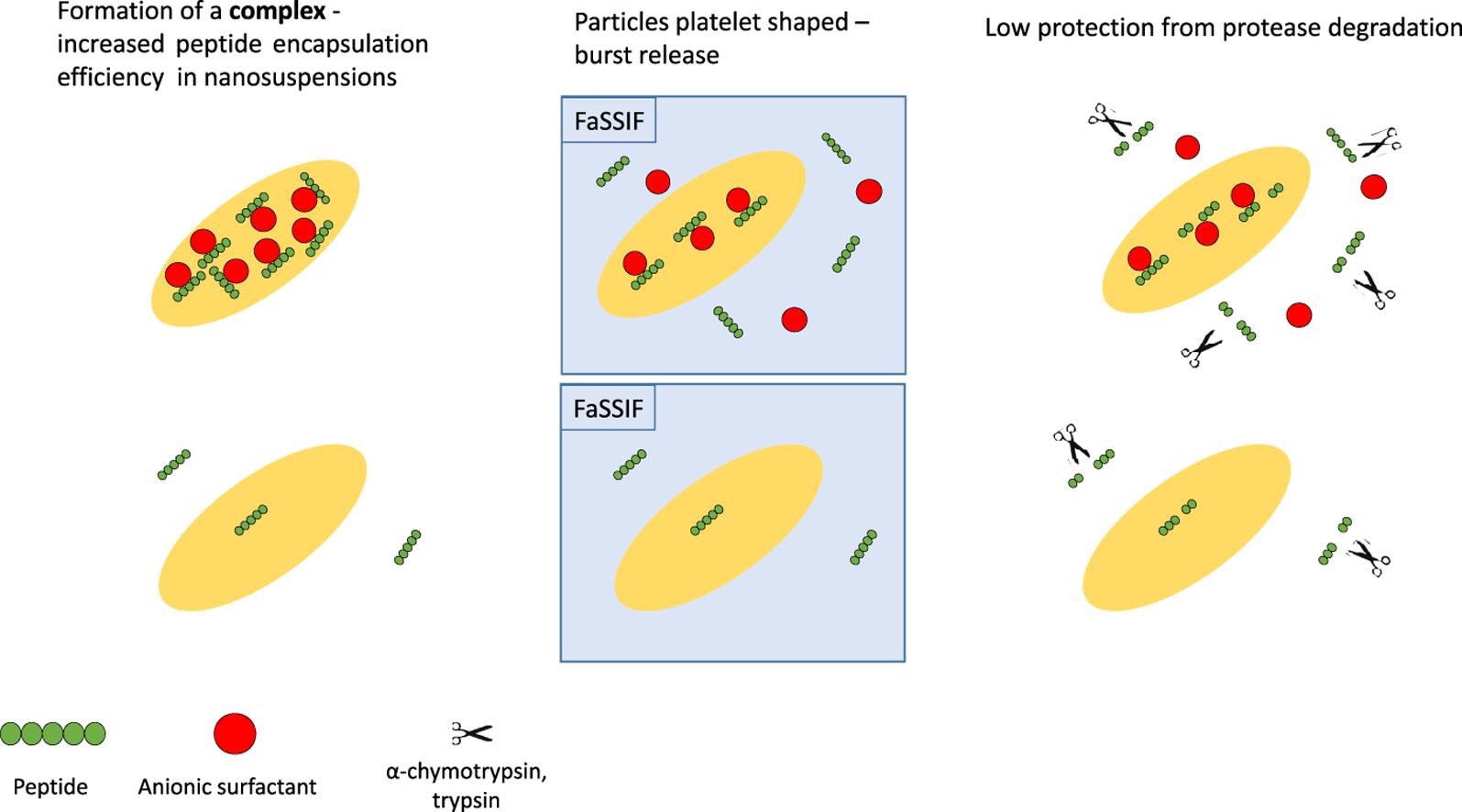In-vitro evaluation of solid lipid nanoparticles

Ability to encapsulate, release and ensure effective protection of peptides in the gastrointestinal tract
Peptides are rarely orally administrated due to rapid degradation in the gastrointestinal tract and low absorption at the epithelial border.
The objective of this study was to encapsulate a model water-soluble peptide in biodegradable and biocompatible solid lipid-based nanoparticles, i.e. Solid Lipid Nanoparticles (SLN) and Nanostructured Lipid Carriers (NLC) in order to protect it from metabolic degradation. Leuprolide (LEU) and a LEU-docusate Hydrophobic Ion Pair (HIP) were encapsulated in SLN and NLC by High Pressure Homogenization. The particles were characterized regarding their Encapsulation Efficiency (EE), size, morphology, peptide release in FaSSIF-V2, and protective effect towards proteases. Nanoparticles of 120 nm with platelet structures were obtained.
Formation of HIP led to a significant increase in LEU EE. Particle size was moderately affected by the presence of simulated fluids. Nonetheless, an important burst release was observed upon dispersion in FaSSIF-V2. NLC were able to improve LEU-HIP resistance to enzymatic degradation induced by trypsin but presented no advantages in presence of α-chymotrypsin. SLN provided no protection regarding both proteases.
Despite an increased amount of encapsulated peptide in solid lipid-based nanoparticles following HIP formation, the important specific surface area linked to their platelet structures resulted in an important peptide release upon dispersion in FaSSIF-V2 and limited protection towards enzymatic degradation. More on solid lipid nano-particles

